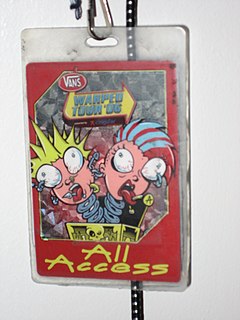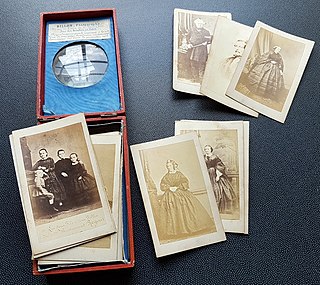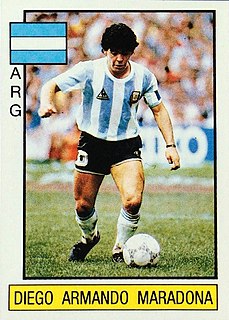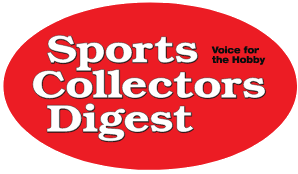 W
WEphemera are any transitory written or printed matters that are not meant to be retained or preserved. The word derives from the Greek ephemeros, meaning "lasting only one day, short-lived". Some collectible ephemera are advertising, trade cards, airsickness bags, bookmarks, catalogues, coasters, greeting cards, letters, pamphlets, postcards, posters, prospectuses, defunct stock certificates or tickets, and zines.
 W
WAn aircraft safety card is a document instructing passengers on an aircraft about the procedures for dealing with various emergency conditions that might arise during the flight.
 W
WThe American Card Catalog: The Standard Guide on All Collected Cards and Their Values is a reference book for American trading cards produced before 1951, compiled by Jefferson Burdick. Some collectors regard the book as the most important in the history of collectible cards.
 W
WThe archaeology awareness playing cards are a set of playing cards developed by the United States Department of Defense designed to educate members of the United States military serving in Iraq and Afghanistan about the importance of respecting ancient monuments, to try to preserve the Iraqi and Afghan national cultural heritage. The goal of the publication of the cards was two-fold according to Fort Drum archaeologist Laurie Rush - to prevent unnecessary damage to ancient sites and to stem the illegal trade of artifacts in Iraq. The military has long recognized that educational playing cards are a good way to capitalize on the time soldiers spend waiting for orders.
 W
WA backstage pass is a credential which allows its bearer access to restricted areas at a performance or conference venue, most commonly associated with rock or R&B music groups, though have since become commonplace across many entertainment events. Backstage passes can come in the form of lanyards, stickers or wristbands. To deter counterfeiting, these passes often include holograms and unique artwork. After the performance, backstage passes sometimes become memorabilia sold to fans, especially when the pass is signed by a performer.
 W
WA baseball card is a type of trading card relating to baseball, usually printed on cardboard, silk, or plastic. In the 1950s they came with a stick of gum and a limited number of cards. These cards feature one or more baseball players, teams, stadiums, or celebrities. Baseball cards are most often found in the U.S. mainland but are also common in Puerto Rico or countries such as Canada, Cuba and Japan, where top-level leagues are present with a substantial fan base to support them. Some notable baseball card producing companies include Topps, Upper Deck Company, and Panini Group. Previous manufacturers include Fleer, Bowman, and Donruss. Baseball card production peaked in the late 1980s and many collectors left the hobby disenchanted after the 1994-95 MLB strike. However, baseball cards are still one of the most influential collectibles of all time. A T206 Honus Wagner was sold for $6.606 million in 2021.
 W
WBaseball Talk was a set of 164 "talking" baseball cards that were released by Topps and the LJN Corporation during the spring of 1989. Each card featured a plastic disk affixed to the back of an oversized baseball card. When placed in the SportsTalk player the cards would play two to three minutes of recorded audio. The player retailed for $24.99 and was labeled for ages six and up. It required four AA alkaline batteries to operate.
 W
WA basketball card is a type of trading card relating to basketball, usually printed on cardboard, silk, or plastic. These cards feature one or more players of the National Basketball Association, National Collegiate Athletic Association, Olympic basketball, Women's National Basketball Association, Women's Professional Basketball League, or some other basketball related theme.
 W
WBillhead receipts are receipts that were commonly used in business transactions from the late 1860s through the early 1940s. They can be found in present-day transactions, although they are less common today.
 W
WBusiness cards are cards bearing business information about a company or individual. They are shared during formal introductions as a convenience and a memory aid. A business card typically includes the giver's name, company or business affiliation and contact information such as street addresses, telephone number(s), fax number, e-mail addresses and website. Before the advent of electronic communication business cards might also include telex details. Now they may include social media addresses such as Facebook, LinkedIn and Twitter. Traditionally, many cards were simple black text on white stock, and the distinctive look and feel of cards printed from an engraved plate was a desirable sign of professionalism. In the late 20th century, technological advances drove changes in style, and today a professional business card will often include one or more aspects of striking visual design.
 W
WThe carte de visite, abbreviated CdV, was a type of small photograph which was patented in Paris by photographer André Adolphe Eugène Disdéri in 1854, although first used by Louis Dodero. Each photograph was the size of a visiting card, and such photograph cards were commonly traded among friends and visitors in the 1860s. Albums for the collection and display of cards became a common fixture in Victorian parlors. The immense popularity of these card photographs led to the publication and collection of photographs of prominent persons.
 W
WA certificate of authenticity (COA) is a seal or small sticker on a proprietary computer program, t-shirt, jersey, or any other memorabilia or art work, especially in the world of computers and sports. It is commonly a seal on paper authenticating a specific art work which and is made to demonstrate that the item is authentic. Computer COAs have a license number on them, which verifies that the program is a genuine, legal copy. Art work or posters come with a certificate of authenticity signed and sealed by a reputable appraiser or auction house.
 W
WChick tracts are short evangelical gospel tracts, originally created and published by American publisher and religious cartoonist Jack T. Chick. Since his death, his company has continued to print tracts, including tracts by new writers.
 W
WCigarette cards are trading cards issued by tobacco manufacturers to stiffen cigarette packaging and advertise cigarette brands.
 W
WA coaster, drink coaster, beverage coaster, or beermat is an item used to rest drinks upon. Coasters protect the surface of a table or any other surface where the user might place a drink. Coasters placed on top of a beverage can also be used to show that a drink is not finished or to prevent contamination. Coasters can also stop hot drinks from burning the table surface.
 W
WEdge-notched cards or edge-punched cards are a system used to store a small amount of binary or logical data on paper index cards, encoded via the presence or absence of notches in the edges of the cards. The notches allowed efficient sorting and selecting of specific cards matching multiple desired criteria, from a larger number of cards in a paper-based database of information. In the mid-20th century they were sold under names such as Cope-Chat cards, E-Z Sort cards, McBee Keysort, and Indecks cards.
 W
WEinstein's Blackboard is a blackboard which physicist Albert Einstein (1879–1955) used on 16 May 1931 during his lectures while visiting the University of Oxford in England. The blackboard is in the collection of the Museum of the History of Science in Oxford.
 W
WEphemeral art is the name given to all artistic expression conceived under a concept of transience in time, of non-permanence as a material and conservable work of art. Because of its perishable and transitory nature, ephemeral art does not leave a lasting work, or if it does – as would be the case with fashion – it is no longer representative of the moment in which it was created. In these expressions, the criterion of social taste is decisive, which is what sets the trends, for which the work of the media is essential, as well as that of art criticism.
 W
WThe Ephemeral Museum is the first ephemeral art museum in the world.
 W
WA flyer is a form of paper advertisement intended for wide distribution and typically posted or distributed in a public place, handed out to individuals or sent through the mail. In the 2010s, flyers range from inexpensively photocopied leaflets to expensive, glossy, full-color circulars.
 W
WAn American football card is a type of collectible trading card typically printed on paper stock or card stock that features one or more American football players or other related sports figures. These cards are most often found in the United States and other countries where the sport is popular.
 W
WRobert Forsythe and his wife Fiona curate elements of The Forsythe Collection. The collections are huge and include materials in three public repositories. Of the material now in public ownership or curation the largest element is The Forsythe Collection in the National Railway Museum at York's Search Engine Archive. The central theme of their collecting is the ephemera of travel and transport. A thought that is especially driven by the recognised concept of "grey literature".
 W
WA telephone card, calling card or phonecard for short, is a credit card-size plastic or paper card, used to pay for telephone services. It is not necessary to have the physical card except with a stored-value system; knowledge of the access telephone number to dial and the PIN is sufficient. Standard cards which can be purchased and used without any sort of account facility give a fixed amount of credit and are discarded when used up; rechargeable cards can be topped up, or collect payment in arrears. The system for payment and the way in which the card is used to place a telephone call vary from card to card.
 W
WGedolim pictures are photos or sketches of famous rabbis, known as gedolim, who are revered and admired by Jews.
 W
WDuring the 2003 invasion of Iraq by a United States-led coalition, the U.S. Defense Intelligence Agency developed a set of playing cards to help troops identify the most-wanted members of President Saddam Hussein's government, mostly high-ranking members of the Iraqi Regional Branch of the Arab Socialist Ba'ath Party or members of the Revolutionary Command Council; among them were some of Hussein's family members. The cards were officially named the "personality identification playing cards". As of 2021, all but 4 of the 52 most wanted have been either killed or captured, eleven of whom have been released.
 W
WA newspaper is a periodical publication containing written information about current events and is often typed in black ink with a white or gray background.
 W
WA pamphlet is an unbound book. Pamphlets may consist of a single sheet of paper that is printed on both sides and folded in half, in thirds, or in fourths, called a leaflet or it may consist of a few pages that are folded in half and saddle stapled at the crease to make a simple book.
 W
WA pin-back button or pinback button, pin button, button badge, or simply pin-back or badge, is a button or badge that can be temporarily fastened to the surface of a garment using a safety pin, or a pin formed from wire, a clutch or other mechanism. This fastening mechanism is anchored to the back side of a button-shaped metal disk, either flat or concave, which leaves an area on the front of the button to carry an image or printed message. The word is commonly associated with a campaign button used in the United States and abroad during a political campaign. The first design for a pin-back button in the United States was patented in 1896, and contemporary buttons have many of the same design features.
 W
WPro Set was a Dallas-based trading card company founded by Ludwell Denny in 1988. Denny had gained a card license that year after making and selling other NFL memorabilia in previous years. His licensing agreement with NFL Properties allowed Denny to gain access to its extensive photo library and become the first card maker officially associated with a professional sports league. Across the bottom of most of his company's cards was its designation as "The Official NFL Card," a distinction it held through 1991.
 W
WA programme or program is a booklet available for patrons attending a live event such as theatre performances, concerts, fêtes, sports events, etc. It is a printed leaflet outlining the parts of the event scheduled to take place, principal performers and background information. In the case of theatrical performances, the term playbill is also used. It may be provided free of charge by the event organisers or a charge may be levied.
 W
WA refrigerator magnet or fridge magnet is a small magnet, often attached to an artistic or whimsical ornament, which may be used to post items such as shopping lists, child art or reminders on a refrigerator door, or which simply serves as decoration. Refrigerator magnets come in a wide variety of shapes and sizes, and may have promotional messages placed on them. Refrigerator magnets are popular souvenir and collectible objects.
 W
WA sickness bag is a small bag commonly provided to passengers on board airplanes and boats to collect and contain vomit in the event of motion sickness.
 W
WA trading card is a small card, usually made out of paperboard or thick paper, which usually contains an image of a certain person, place or thing and a short description of the picture, along with other text. There is a wide variation of different types of cards.
 W
WSports Collectors Digest (SCD) is an American advertising weekly paper published at Iola, Wisconsin. The magazine provides an avenue through which sellers, traders and avid buyers of Sports cards and other memorabilia may interact.
 W
WSports memorabilia refers to collectables associated with sports. Types include equipment, trophies, sports cards, autographs, photographs, etc.
 W
WA sticker is a type of label: a piece of printed paper, plastic, vinyl, or other material with pressure sensitive adhesive on one side. They can be used for decoration or for functional purposes, depending on the situation.
 W
WA student publication is a media outlet such as a newspaper, magazine, television show, or radio station produced by students at an educational institution. These publications typically cover local and school-related news, but they may also report on national or international news as well. Most student publications are either part of a curricular class or run as an extracurricular activity.
 W
WStudio cards were tall, narrow humorous greeting cards which became popular during the 1950s. The approach was sometimes cutting or caustic, a distinct alternative to the type of mild humor previously employed by the major greeting card companies.
 W
WA tract is a literary work and, in current usage, usually religious in nature. The notion of what constitutes a tract has changed over time. By the early part of the 21st century, a tract referred to a brief pamphlet used for religious and political purposes, though far more often the former. Tracts are often either left for someone to find or handed out. However, there have been times in history when the term implied tome-like works. A tractate, a derivative of a tract, is equivalent in Hebrew literature to a chapter of the Christian Bible.
 W
WA trade card is a square or rectangular card that is small, but bigger than the modern visiting card, and is exchanged in social circles, that a business distributes to clients and potential customers, as a kind of business card. Trade cards first became popular at the end of the 17th century in Paris, Lyon and London. They functioned as advertising and also as maps, directing the public to the merchants' stores.
 W
WA trading card is a small card, usually made out of paperboard or thick paper, which usually contains an image of a certain person, place or thing and a short description of the picture, along with other text. There is a wide variation of different types of cards.
 W
WVinegar valentines were a type of cheeky postcard decorated with a caricature and insulting poem. A lampoon of Valentine's Day cards, the unflattering novelty items enjoyed a century of popularity beginning in the 1840s during the Victorian era.
 W
WA visiting card, also known as a calling card, is a small card used for social purposes. Before the 18th century, visitors making social calls left handwritten notes at the home of friends who were not at home. By the 1760s, the upper classes in France and Italy were leaving printed visiting cards decorated with images on one side and a blank space for hand-writing a note on the other. The style quickly spread across Europe and to the United States. As printing technology improved, elaborate color designs became increasingly popular. However, by the late 1800s, simpler styles became more common.